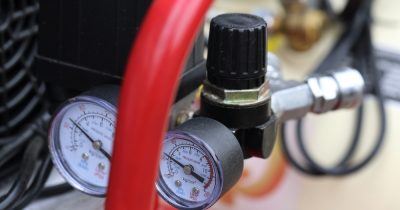
Despite Air India officials insisting the doomed jet was “well maintained,” a storm of scrutiny is now crashing down on the airline. An explosive new report reveals that critical safety protocols were violated – just days before the horrific plane crash that claimed the lives of nearly 300 people.
Just moments after taking off, the London-bound Air India Flight 171 erupted into a massive fireball after crashing into a residential neighborhood in Ahmedabad, killing almost 300, including 241 onboard.
The cause behind the catastrophic crash of the AI Boeing 787-8 Dreamliner still remains shrouded in mystery, as Indian aviation authorities have yet to reveal what led the massive jet to plunge from the sky in a horrifying descent.
Now, as the wreckage still smolders in the minds of a grieving nation, investigators are racing against time to decode the jet’s black boxes – the cockpit voice recorder and flight data recorder – which may hold the final, chilling seconds of the flight and the key to what went so catastrophically wrong.
‘No issues before the flight’
And the airline insists the blame doesn’t lie with Air India – no mechanical issues were reported with the Dreamliner before takeoff.
“The plane was well-maintained, with its last major check in June 2023,” Air India said in a statement, per France 24. “Its right engine was overhauled in March 2025, and the left engine was inspected in April 2025. Both the airplane and engines were regularly monitored, showing no issues before the flight.”
Revealing report
However, according to revealing documents obtained by Reuters, India’s aviation regulator – the Directorate General of Civil Aviation (DGCA) – had issued multiple warning notices to Air India just days before the crash.
In the DGCA report obtained by the news site, spot checks conducted in May uncovered a series of alarming oversights on three Air India Airbus aircraft. The planes had been operating despite overdue mandatory inspections on critical emergency equipment –specifically, the escape slides designed to save lives in an emergency.
Vibhuti Singh, a former legal expert at the government’s Aircraft Accident Investigation Bureau, told Reuters that the inspection of slides is “a very serious issue. In case of accident, if they don’t open, it can lead to serious injuries.”
Flight continued without safety check
One particularly serious case involved an Airbus A320, with its safety inspection delayed by more than a month before it was finally completed on May 15. Alarmingly, during that time, the aircraft continued flying international routes to major cities including Dubai, Riyadh, and Jeddah.
Another aircraft, an Airbus A319 servicing domestic routes, was found to have missed its inspection by more than three months. A third case, though less severe, still breached protocol with a delay of two days.
‘Weak procedural control’
The regulator went even further, accusing Air India of failing to respond on time to their concerns and showing signs of “weak procedural control” and negligent “oversight.”
“The above cases indicate that aircraft were operated with expired or unverified emergency equipment, which is a violation of standard airworthiness and safety requirements,” the DGCA report said.
It added that Air India “failed to submit timely compliance responses” requested by the DGCA, “further evidencing weak procedural control and oversight.”
Unrelated to crash
Although the timing raised eyebrows, the warning notices and investigation report – both obtained by Reuters – were not directly linked to the deadly crash on June 12, which killed 241 of the 242 people on board.
In fact, the documents were issued just days before the tragic incident, adding a chilling layer of context but officially remaining unrelated to the disaster.
‘Cooperate with the authorities’
Air India has yet to publicly explain why the violations were allowed to continue – or whether similar oversights could exist elsewhere in its fleet.
Addressing safety concerns, the airline shared a post on X, explaining it would “reduce its international services on widebody aircraft by 15% for the next few weeks.”
“Going forward, we will continue to cooperate with the authorities, viz AAIB, DGCA, MoCA to ensure the safety of our passengers, our crew and our aircraft, which remains our highest priority,” it added.
What are your thoughts on Air India failing to comply with safety requirements? Please let us know what you think and then share this story so we can hear from others!
READ MORE
- Simulation of Air India flight crash shows exactly how one person managed to survive
- Aviation expert uncovers missed detail in deadly Air India Crash




